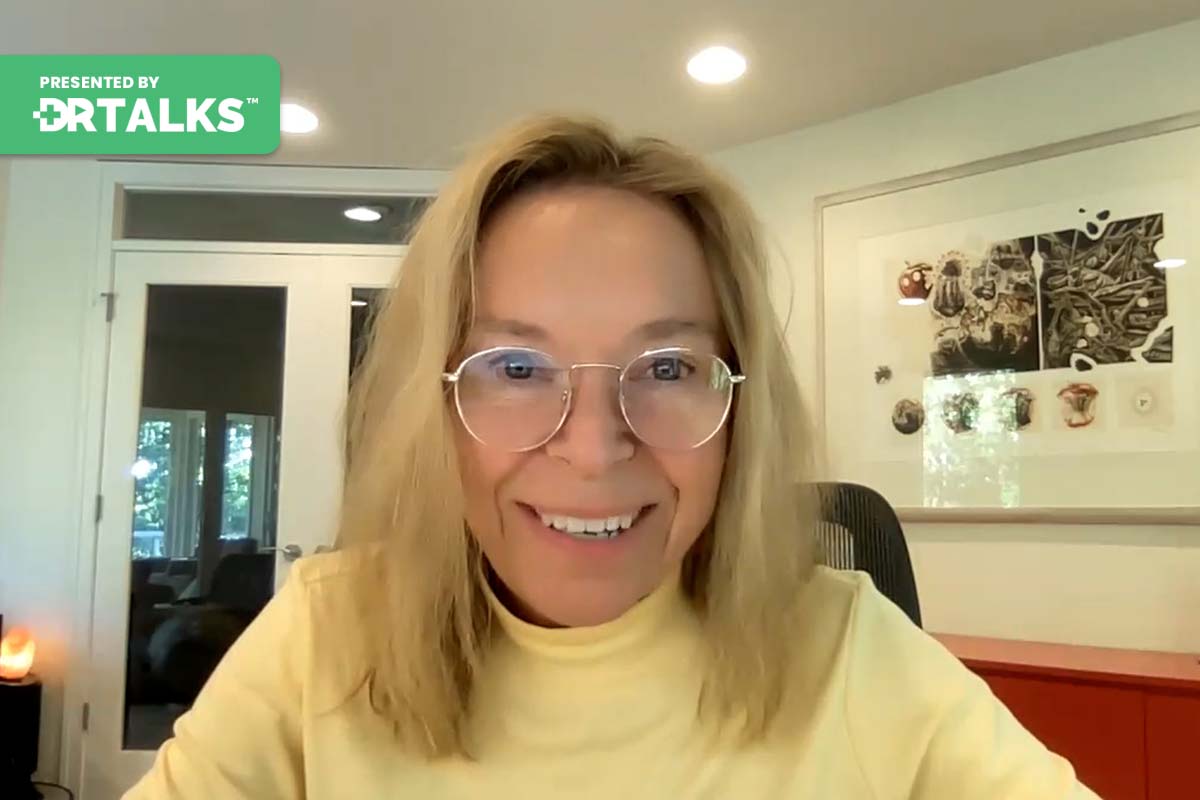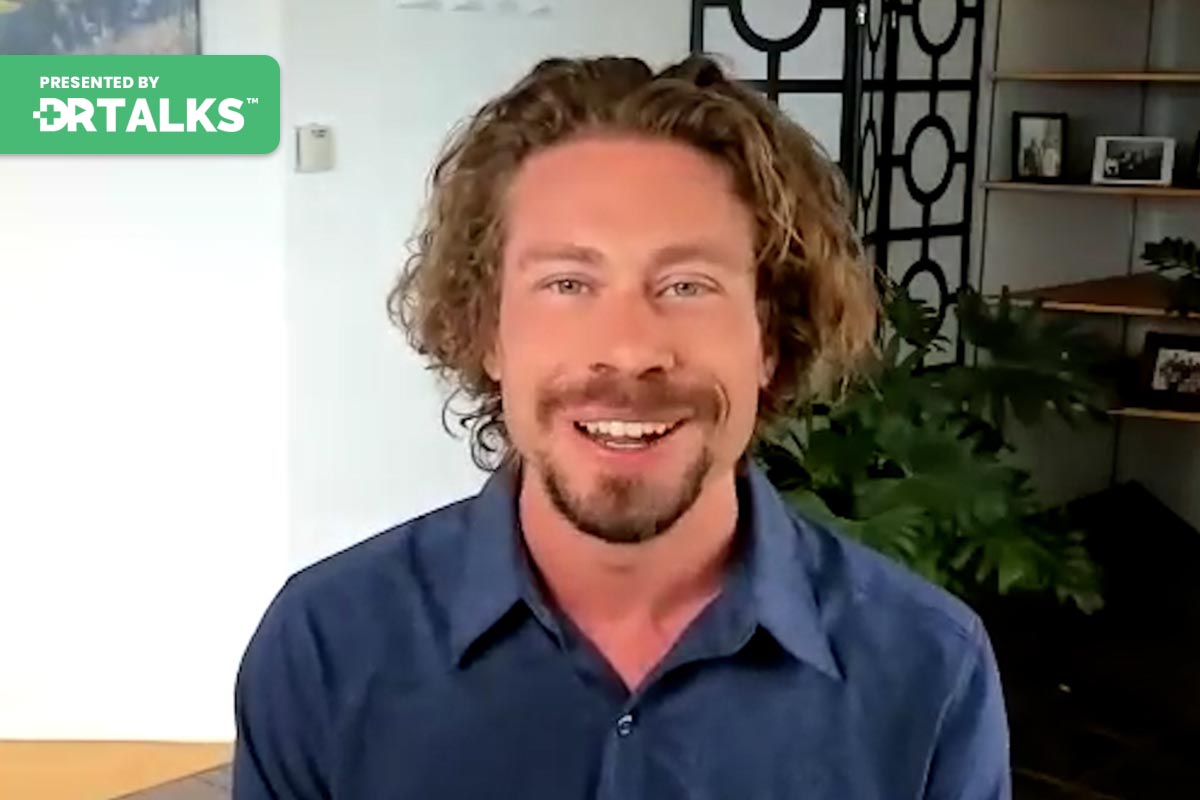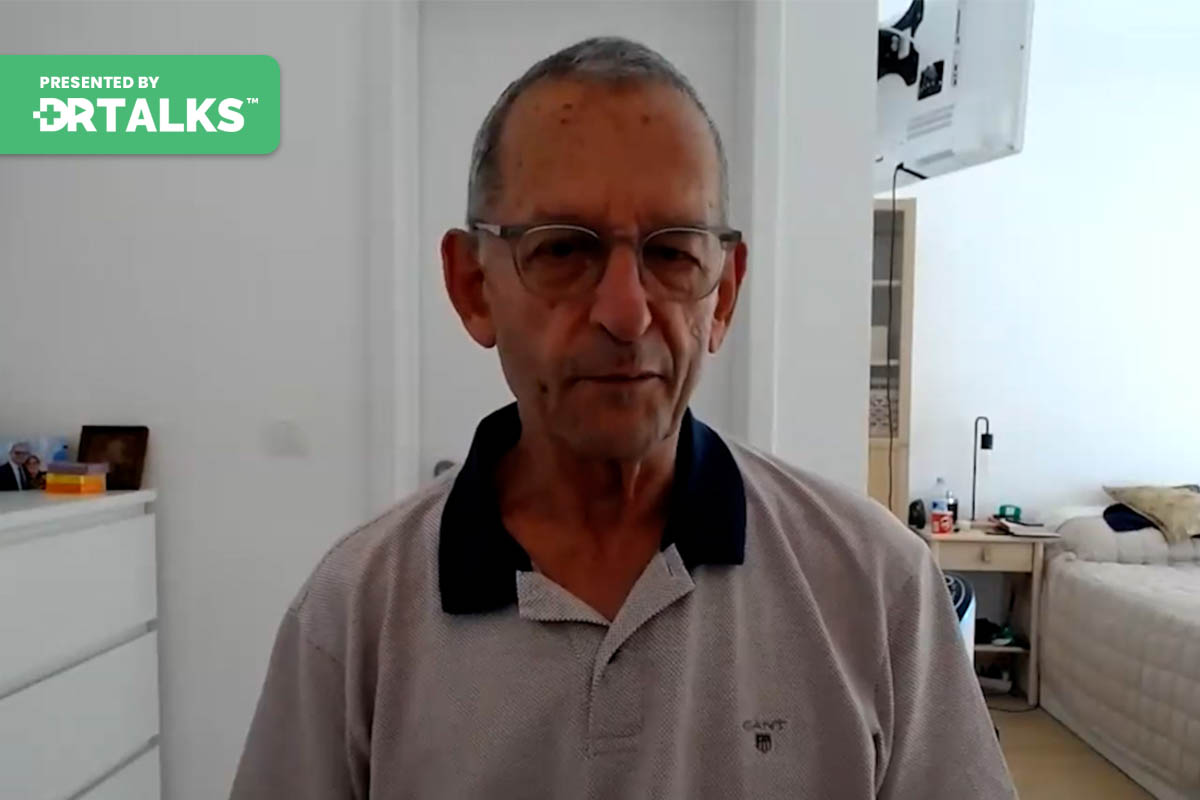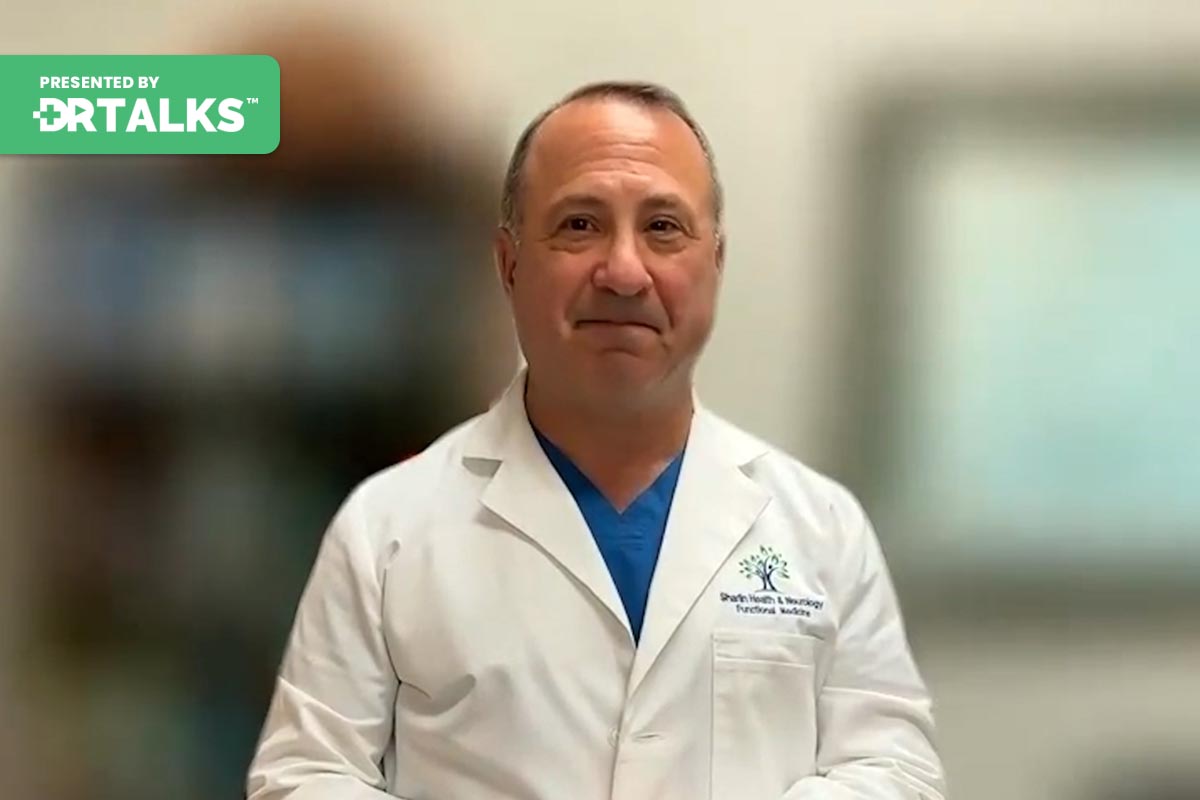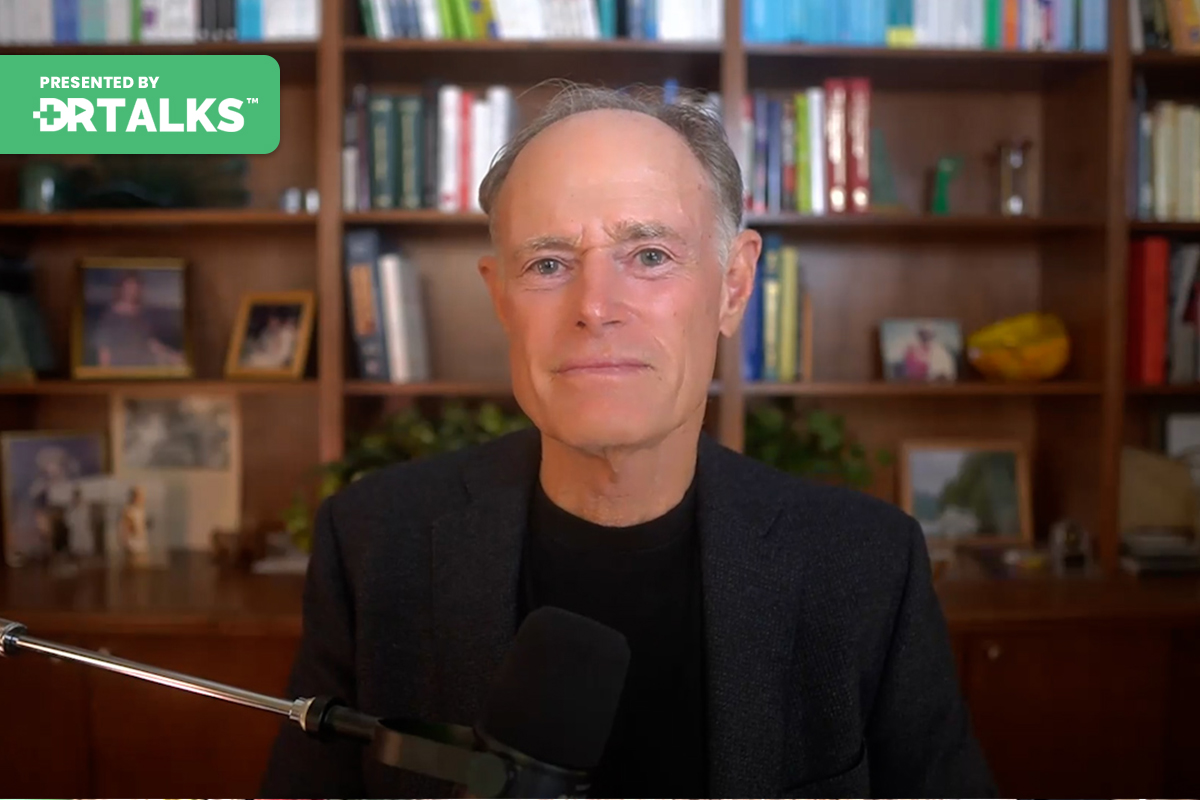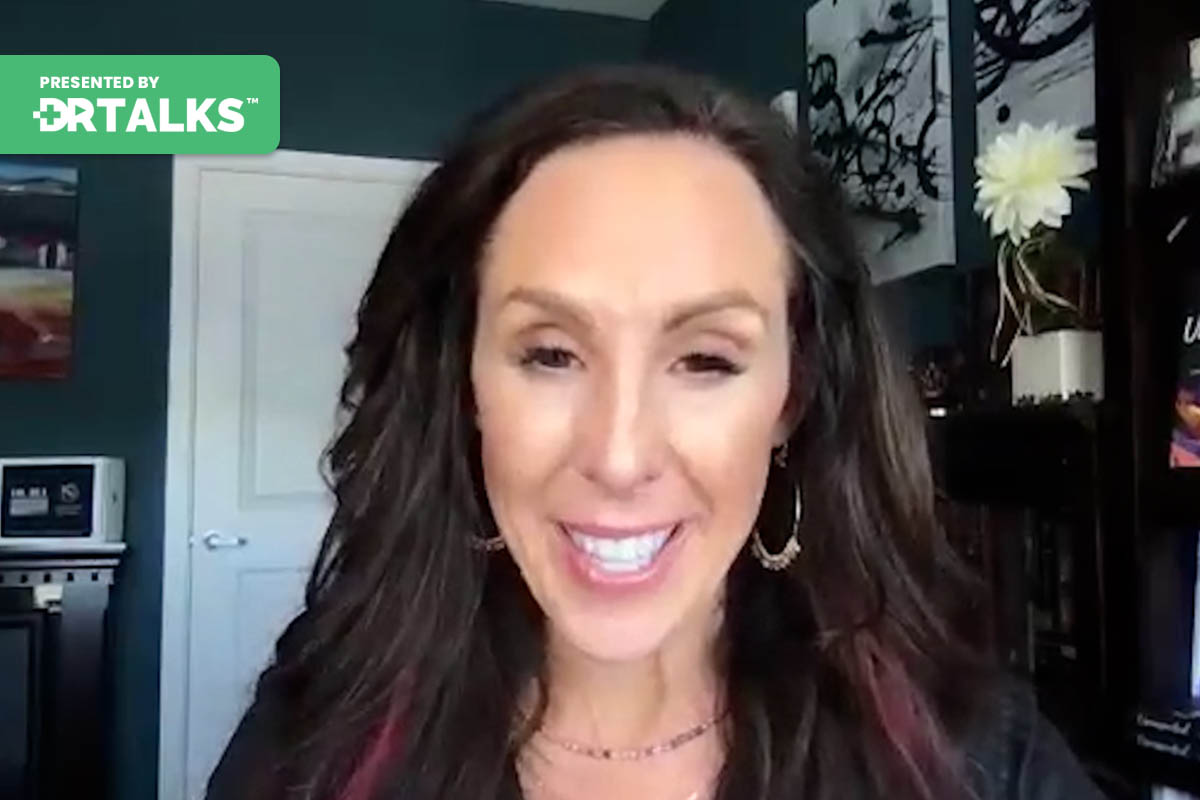Join the discussion below
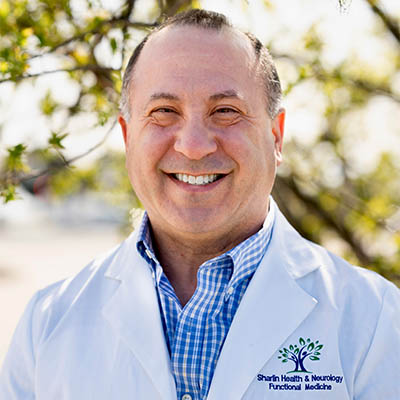
Kenneth Sharlin, MD, MPH, IFMCP
Kenneth Sharlin, MD, MPH, IFMCP, is a board-certified neurologist, consultant, functional medicine practitioner, Assistant Clinical Professor, researcher, author, and speaker. His medical degrees are from Emory University, The University of Virginia, and Vanderbilt University. His functional medicine certification is through The Institute for Functional Medicine. He is author of the... Read More

Terri DeNeui, DNP, APRN, ACNP-BC
Speaker, Author, and Board-Certified Nurse Practitioner Dr. Terri DeNeui has extensive training in her field. Her 27-year career expands from over a decade in high-risk OB and emergency care at a major trauma center in Dallas Texas, as well as several years as a hospitalist. Disenchanted with the current “sick... Read More
- Debunk myths surrounding hormone replacement therapy
- Understand the different types of estrogen and the role of testosterone levels
- Learn about the potential link between low hormone levels and neurodegenerative diseases
- This video is part of The Parkinson’s Solutions Summit
Related Topics
Bioidentical Hormones, Biosimilar, Brain Health, Chronic Diseases, Hormone Conference, Hormone Deficiency, Hormone Insufficiencies, Hormone Market, Hormone Prescription, Hormone Replacement Therapy, Hormone Space, Hormone Training, Menopause, Positive Changes, Preventable Diseases, Preventative Care, Reproductive Health, Root Cause, Synthetic Estrogen, Us HealthcareKenneth Sharlin, MD
Welcome to the Parkinson’s Solutions Summit. I am your host, Dr. Ken Sharlin. I hope you have been enjoying the interviews we have shared with you so far. I am very excited today to introduce Terri DeNeui. She and I have known each other for several years. She is going to tell you a little bit about who she is and all that she has accomplished.
She is an expert in the arena of Bioidentical Hormone Replacement Therapy. The founder of EVEXIAS Health Solutions and is also the Chief Medical Officer for that company. We have been using their hormone system for several years at Sharlin Health and Neurology. If someone asked me, is there one thing that you have done in your clinic in all these years that has transformed people’s lives in a very immediate way? In other words, folks, if you are going to make changes in lifestyle, diet, and exercise, and believe me, we are 110% all over that, it is going to pay off for you.
A lot of folks want to know, and they want to see results quickly. They want to know: is this whole approach overall going to work for me? When we start with hormone optimization, what I find is that this approach does give them back the assurance that things besides the drugs are not important, but what can we do besides the drugs that make a real difference in their lives? With that being said, welcome to the Parkinson’s Life Summit. Terry. I am so pleased to have you.
Terri DeNeui, DNP, APRN, ACNP-BC
Thank you. I am very honored to be here and have been invited, and there are a lot of great speakers in your lineup. I feel honored to be here, and I love what you are saying about the life change. We have two clinics in the DFW Metroplex, and this is the cornerstone, and it is completely life-changing. My background is in hospital medicine, acute care medicine, and hospitalist work. I worked in a hospital for many years with a hospital group, and I just became very disenchanted with—I call it our sick care system—a lot of mandated things.
I just remember thinking that after three days, I did a better job. These are all preventable diseases. Every patient I have seen, from Alzheimer’s disease to cardiovascular disease to diabetes, everything. It is preventative in many cases. I love what we do because, based on the literature and everything we are finding, not only can we help patients feel good, but we also have a great opportunity to prevent a lot of diseases and improve their quality of life. It is a lot of fun.
Kenneth Sharlin, MD
How did you find out about hormone replacement therapy and what it could do for people?
Terri DeNeui, DNP, APRN, ACNP-BC
Well, I think I was probably divinely placed somewhere where I did not have any intention of getting into the hormone space. However, I was invited to a hormone conference by a compounding pharmacy owner. That was next door to my very new clinic. I had started the clinic originally with another practitioner who was focusing on weight loss, and he came over and said that hormones go right hand-in-hand with weight loss. He said, How about you? I give you a first-class, all-expenses-paid trip to this big conference in Las Vegas and maybe learn about hormones. I was interested in that first-class trip to Vegas. But while sitting in those lectures, I remember a specific moment when one of the doctors who was speaking was talking about the change in her patients. I had a moment where I thought, This is what I am supposed to be doing.
I just started getting out there and going to different conferences and learning as much as I could, because hormones are not taught in our primary clinical training, whether it is medical school, nurse practitioners, or VAs. so you have to go outside of their normal curriculum to learn about these things. I have just learned as much as I could and brought it back to my clinic, and it just started growing exponentially because it was providing a lot of positive changes for patients, and it just grew and grew. I became interested in, well, how can we impact more lives than just in my little Metroplex. My now husband, Dan, and I started with another physician, a company whose focus was training other physicians and healthcare providers on life-changing therapy. It has been about 15 years. We are in our 15th year in the space, so it has grown and grown, and I think it has grown because it works. You mentioned bioidentical and earlier biosimilar, and a lot of people are confused about what that is. Maybe we will talk about that. But that is kind of how I got into the space. I was not looking for it, but I was always there. and it is my passion.
Kenneth Sharlin, MD
There are some different directions in which we can go with this. I hope we get to explore sort of all of them. We should set the stage a little bit for folks, and one of the things is that I come from a background, of course, in traditional neurology as a board-certified neurologist, but I was also trained in functional medicine. But there is another dimension that sort of overlaps with functional medicine, and that is regenerative medicine. I think of it as similar but different. One of the distinctions is that, when we are a little bit younger, I am almost 60. I am not going to ask you how old you are, but I know now the day of your travel.
Terri DeNeui, DNP, APRN, ACNP-BC
I am 55, and I have no problem sharing my age. Hormones were.
Kenneth Sharlin, MD
Absolutely. There is a perfect example of why you should be using hormones. But at any rate, in functional medicine, a lot of the focus is that there has been some disruption of hormones; environment and lifestyle play major roles sometimes; infections, etc. restoring hormones naturally in the sense that, if you are a 35-year-old woman who should be having normal menstrual cycles but you are not, and maybe you are even struggling with fertility, why is that? What do we need to identify and correct?
But I say, particularly with women, and we are going to talk about men, too, but 100% of women will go through menopause, 100%. Now, you might go through menopause at the hands of a surgeon who removes your ovaries, but eventually, something is going to happen in your life. Whether that is natural or surgical, you are going to go through menopause. That is kind of where I see a lot of regenerative medicine stepping in because we need to have that dialogue of, Okay, I understand that you are not thinking about your reproductive health right now, but taking a step back from that, what is the bigger picture of what hormones do for the body? We might even need to define hormones there. then even for men, we do see a trend of progressively lower testosterone as men get older.
Unfortunately, we see some very young men with extremely low testosterone for a variety of reasons. Although there may not be a traditional menopause equivalent, there is the term rew Pozzi that gets thrown around that’s a little less distinct as opposed to maybe, I might say most women generally go through menopause somewhere between their very late 40s and early 50s. That is not necessarily the same for men, but just having an awareness that men can very definitely get low testosterone
There are some extreme, and I am not understating it, consequences of low testosterone, to the point that the symptoms that they may come in with may be blamed on a whole variety of things. It often involves pharmacological interventions. Then some of the brothers check the testosterone. It is 192, and we put them on testosterone, and they are everything. Then I do not need that Prozac. But let us go back to regenerative, that sort of framework of, Hey, I am too old to have babies. Why not? My doctor tells me I do not need hormones anymore. I have even heard that hormones may be dangerous. We need to dispel a few myths and help people understand what hormones do in general and why they should care.
Terri DeNeui, DNP, APRN, ACNP-BC
You have said so much. Great there. Well, let us just start with what the word hormone means. It is Greek. The Greek definition is that I arouse activity or something that impels or urges activity. Hormone receptors are present in every single body system, from head to toe. Not only are there some interesting and vague complaints that the post-reproductive person, but premenopausal and menopausal males might present with. A lot of times, most practitioners do not think of hormones. You said that: depression and mood alterations, anxiety, irritability, difficulty sleeping, fatigue, hitting a wall, about 2 to 4 in the afternoon, difficulty staying asleep through the night, joint pain, and belly weight gain. Chronic pain syndromes are highly linked to hormone insufficiencies, and those are just the tangible things. Then, of course, what we know, what we teach, and what you have experienced in a lot of our lectures is the link between hormone decline and chronic disease processes: cardiovascular disease, Alzheimer’s disease, even Parkinson’s, osteoporosis, even breast cancer, even prostate cancer.
There are a lot of myths around these hormones that do need to be dispelled that have just started with the misinformation, I guess, or misrepresentation of information from some key clinical trials for women, the Women’s Health Initiative. But there are a lot of reasons for people to have a lot of these issues, and then they go to their primary care provider, and they are given, to your point, Prozac or Ambien for their sleep or something for their anxiety, Xanax. and I am always trying to teach people that you are not deficient in Xanax or an SSRI, which is Prozac, or those other medications. Let us try to get to the root cause. Another thing that people do not understand is that many of those medications, most all of those medications in general, except for maybe some in your world and even cardiovascular, were not ever meant to be used long-term. They were meant as a stopgap solution to manage your symptoms while you figured out what the root cause of the symptoms is, and what you and I know is that a lot of times the root cause of the symptoms is some sort of hormone deficiency or insufficiency, I should say.
Kenneth Sharlin, MD
Yes. Now, correct me if I am wrong, but there is a little history here, as I understand it, that there is a period in sort of you, I will just call it U.S. health care, where prescribing hormones in particular to women, again, thinking about menopause in those postmenopause years, which we want to be, I do not know at least half of our lives. In other words, I want to live to be 100, even if I am going through menopause at age 50. It was very common and, quote, normal to prescribe hormones to women.
Then there was a shift. There was a major shift that came about, as I understand it, from a paper that was published that probably did, and I am editorializing, but I want you to expound on this or correct me again if I am wrong, but probably did more damage to women and how we deliver health care than the paper ever intended. I do not think in general that research, as it is published, is intended to hurt people. But arguably, in this particular case, it did because it changed the way we practice medicine.
Terri DeNeui, DNP, APRN, ACNP-BC
Yes. You are talking about the Women’s Health Initiative trial before the trial. Synthetic estrogen for women came on the market in about the 1940s, and before that, bioidentical estrogen and testosterone were being studied and utilized in the form of pellet therapy, which you and I used a lot. But when that magic little pill came out in the forties, a lot of these other natural modalities fell by the wayside. What doctors were seeing then and then later on in the 50s and the 60s, was that the progesterone arm of that medication, women were having a lot of endometrial cancer, and then they were, We need progesterone to protect the uterine lining from cancer. Prime Pro, Premarin, and Provera came on the market, and that was the progestin arm of the trial. I am referring to the introduction of progestins to the market. But what doctors were seeing across the country was that women on these estrogen-based hormones had a significant reduction in cardiovascular disease and also in osteoporosis.
The Women’s Health Initiative trial, which is the largest EST study on women to date, started in the late nineties and was stopped early in 2002, followed by the other arms in 2004. But that trial intended to prove that estrogen-based hormones did protect the heart and the bones. Also, they were looking at safety data as it related to breast cancer. What happened in 2002 was the progestin arm of the trial. In the trial, the women were placed in two groups. If they had a hysterectomy, they went into the estrogen-only arm of the trial. If they had a uterus, they went into the progestin arm of the trial, which had synthetic estrogen and progestin. In 2002, there was overwhelming evidence that the women in the progestin arm had much higher rates of Alzheimer’s disease, heart attacks, strokes, and breast cancer. But unfortunately, what happened was that the media extrapolated or took that negative information that was coming out of the progestin arm and applied it to all hormonal modalities.
Now, no one was looking at the benefits of the estrogen-only arm until very recently until 2017, in fact, they just threw the baby out with the bathwater. Unfortunately, the media reported it in such a way that it advised doctors to stop prescribing these hormones. Women were throwing them away, flushing them down. The toilet. To your point, whole clinical guidelines for women’s hormones completely changed because of this one arm of the trial. To this day, unfortunately, we are still unraveling the misinformation. Now we are 20 years later, more than 20 years after the trial started. But what’s happened, and the other thing that happened in 2000 and probably six, is that Time magazine just plastered this big cover that says hormones might be riskier than a woman thought. What is a woman to do? It is plastered all over Time magazine that they are bad.
All of this information that has come out since then is refuted. Everything in the estrogen arm we know that estrogen protects the brain against Alzheimer’s disease and cardiovascular disease. I was just talking to you earlier about this 2020 paper that came out that said, Sorry, we had it all wrong. Estrogen protects a woman against breast cancer; it does not cause it, but it can protect a woman from it. They also said it can protect a woman against death from breast cancer if she gets breast cancer. But unfortunately, that is not been plastered all over Time magazine. When you think about the hormones, in all of these chronic disease processes, you mentioned previously with menopause and intercourse, you do not see young women in their 20s when their estrogen levels are at their highest with breast cancer, heart attacks, strokes, and all these other bad things that hormones are.
Kenneth Sharlin, MD
Very rarely.
Terri DeNeui, DNP, APRN, ACNP-BC
Very rarely. Then, another great paper came out in 2023, and we were talking about this earlier, which I love because, as these authors say, it is the type of hormone that you are getting and taking that produces positive or negative outcomes in a body. We have kind of lumped hormones all under this one umbrella. We have thrown them all out together, and everybody’s confused. Again, it is one of the reasons why I was so excited about coming onto this and dispelling a lot of these myths because people do need to understand the truth about health, longevity, and regenerative medicine. To your point, such a long answer to your question.
Kenneth Sharlin, MD
Perfect. Oftentimes, in the papers that we do spend time reading and learning from, they will just say estrogen, then you have to say, Well, why was the form of estrogen? I understand from the Women’s Health Initiative that there were some distinctions between women who were on Premarin, or what is called conjugated equine estrogen, versus estradiol, which is the main human female estrogen form. I think conjugated equine estrogens, which I tell people, come from all different places. But no, this comes from the urine of pregnant horses. But then it has about 15%. Is that correct, at that sort of estradiol and having a variety of estrogens that are not even human estrogens?
Terri DeNeui, DNP, APRN, ACNP-BC
By the human body. Correct.
Kenneth Sharlin, MD
We throw a hook in all of this when we begin to introduce these synthetic estrogens. I am not necessarily saying they are all that bad. I know one of our mutual mentors, Dr. Rouzier, talks a little bit about some of the very early signals in the Women’s Health Initiative versus when you get past that one year that even some of the issues related to that, related to Premarin, did not play out as we took a longer view of that. But we are primarily talking about bioidentical. Now we are talking about the hormones that your body makes, and we are talking about restoring them primarily in adults who are no longer able to produce them themselves or in men who, for a variety of reasons, are not producing levels that they should be. In that situation, we can certainly work with those men and improve their diet, improve their sleep, do some mindfulness-based meditation, exercise, and lift heavy things that stimulate testosterone release.
But getting that extra testosterone and even what we might talk about is optimizing. What levels are even appropriate? Because I am sure you have seen it. People come to me; they are already on testosterone. They are still frustrated. They said, Well, my doctor told me it is in the normal range. They are not getting the benefit. We even want to think about that as well. But we are talking about bioidentical hormones here. Again, the same hormones that your body makes are restoring your hormones to youthful levels. Believe me, as Terry is saying from the symptoms perspective as well as an investment in your future health perspective, folks are reaping the benefits. A paper from the University of Arizona just a couple of years ago suggested a 57% reduction across the board for women starting hormones early in terms of absolute Alzheimer’s. Parkinson’s, MS, and ALS.
Terri DeNeui, DNP, APRN, ACNP-BC
Yes, absolutely. There is a timing, and I am frequently asked this question. Well, is there an age that is too late to start hormones? Well, there is a lot of good data now that says, No. The closer you can get women’s menopausal hormones to that transition, the better. But now we know that with regards to all causes of mortality, which means any cause of death or cardiovascular disease and some of Alzheimer’s, some of the other things, even starting later in life, can have benefits, and it certainly is not a negative.
That old guideline that used to be out there, that was the lowest dose for the shortest amount of time possible, has now been reversed, actually, in 2017. A lot of practitioners do not know that if that guideline was reversed in 2017, you should look at the patient as an individual and ascertain, based on their health history, the risks. Then, if that is what modality of hormones is best for them, which is lovely because that is what we do as clinicians anyway.
Kenneth Sharlin, MD
Well, let us kind of start to bring that lens a little closer to Parkinson’s, and as we round out the interview, we will get into the Parkinson’s stuff. But what are hormones doing in the body? Why do we need them down to the cellular level? Terry, can you talk a little bit more about their role and the different processes that govern how our body works?
Terri DeNeui, DNP, APRN, ACNP-BC
One of my favorite terms is homeostasis. That is where the body is just in perfect sync and balance. When we are talking about hormones, we are talking about hormones for women, primarily estrogen, breast room, and testosterone. A lot of people do not understand or know that women make testosterone and need testosterone as well. Also the thyroid hormones, then DHEA and melatonin—they all play a role. But if we are just talking about the sex hormones, which are for women, estrogen, testosterone, and progesterone, and men, testosterone, and estrogen, men do make a certain amount of estrogen, and it is beneficial. In fact, in a lot of the studies that have come out on men and the benefits of Alzheimer’s disease protection, among other things, what we are finding is that it is the conversion from testosterone to estrogen. It is estradiol that is doing the work. That is what we are finding in more recent studies.
But hormones elicit whatever action they are going to have in the cell, and there are hormone receptors for estrogen and testosterone. Testosterone is the most abundant active hormone in men and women, especially as women age. But we have more receptors for testosterone in our body than estrogen. Even more than testosterone, we have more receptors for the thyroid, which means the thyroid plays a huge role in the brain as well. But those receptors are there in that particular cell, waiting for a hormone or some substance to make something happen inside the cell. When those hormones are not there, those cells do not function fully to their capacity; they do not turn on and do the things that they are designed to do, or at least as well, because it is a piece of the cell. The puzzle in the cell is missing. When we are talking about brain function, there are so many ways that estrogen impacts the brain. We are just talking about estrogen. We now know that estrogen is powerfully anti-inflammatory. What we are learning is that inflammation is at the root of all chronic disease processes. This is why we see estrogen hormones play such a huge role in why, even in this conversation, Parkinson’s women get Parkinson’s disease one and a half to two times less than men, I believe, according to the statistics I read. This is more your area, but a lot of the thinking around that is because of estrogen. Then, that is the hormones have listed all kinds of different actions in different cells depending on what the cell is. But it does that through a hormone receptor.
You mentioned something earlier about normal testosterone ranges. Absolute blood levels are good to know and understand, but often they do not give you the whole picture about that person because, again, number one, reference ranges are based on a bell curve average of, frankly, a sick, unhealthy American population. We teach patients and providers that we want optimal hormones. We want you on that right side of the bell curve, the higher end of the bell curve, much like you might have in school and wanted to get on your test grades. You wanted to be on the right side of the bell curve. Well, it is the same with certain lab averages, especially when we are talking about hormones in women.
Some testosterone labs have zero as part of the normal range, which is up to. It is all over the place. That is one part of the conversation. What might be good for you with your testosterone level as a male might not be near enough for a male or might be too much for another male. Everyone is different. But a lot of that has to do with hormone receptor activity, and how healthy the hormone receptors that lead to the conversation with you coming from a functional world, such as diet and nutrition, maybe certain nutrients? You are missing a vitamin D or even maybe certain types of B vitamins. Maybe you, as a patient, might have an issue with what we call methylation, and that is getting the form of the B vitamin B12 and folate that exerts a positive action on the cell. It is so multifactorial.
When you are talking about hormones, you are looking at the hormone and the hormone receptor and those deficiencies, but you also have to look at the receptors and what is happening in the body. You have to look at the soil. I love to say the soil in which all of this stuff grows and is planted so I can get off on a rabbit trail and all that. But I think that is the answer to your question about why it is important. Hormones turn on until they activate that cell and do what they are supposed to do. If it has a receptor and that hormone has a role inside that cell, without that hormone turning on that cell, it is not going to do its job. Now, when you talk about synthetic hormones, the reason synthetic hormones have an issue is that they might turn on negative things in a cell if they can attach to receptors or block them. That is where progestins cause an increased risk of breast cancer because they block the androgen receptor. We know testosterone is very protective against breast cancer. Hormonal medications are either designed to activate a receptor or block a receptor. That is what synthetic drugs do. So if it is a synthetic hormone, it very well can block the beneficial action of a cell, which can cause negative outcomes. That is why modality matters as well. I do not know if I answered your question; I might have to answer that.
Kenneth Sharlin, MD
We can think of the role of these hormones in terms of things like inflammation and oxidative stress. We can think of them as growth factors. When we are dealing with it now, yes. We are thinking about things like neurodegenerative diseases. We want to regrow our brains; we want to make connections, and we certainly do not want to block that from occurring right now. It has been noted, as you mentioned, that there is somewhat of a male predominance in Parkinson’s disease. There is, however, a female predominance of about 2 to 1 in Alzheimer’s disease. People like Lisa Mosconi, who is up in New York City, I think she is with Cornell and has done a lot of work looking at the difference between the female brain and hormones and how we can use hormones to maybe prevent or slow the progression.
In her case, she is studying Alzheimer’s specifically, but we are looking at testosterone levels. We are looking at all hormones. I see a man come in, again they are not actively thinking this is Parkinson’s. Check my testosterone. But that is what we need to be doing. We need to, yes, we are treating with leave a dopa. Yes, we are doing other things. But as part of a comprehensive evaluation, we are looking at your testosterone level. By the way, we are not saying, Hey, you are below that reference range. The cutoffs are therefore that you have a deficiency because maybe you have a level of 400, which a lot of doctors will say is normal. But then we get your level to a thousand or 1,200. Again, it is kind of all the lights coming on the open gates. I am here. I have arrived. It does make a huge difference. Now, there are different forms of hormones, and you and I have a lot of interest in hormone pellets, but I am probably sure you use other forms as well. Let us talk a little bit about some of these different forms and why pellets might have some advantages for some folks.
Terri DeNeui, DNP, APRN, ACNP-BC
Yes. We have talked about bioidentical or biosimilar. You will hear that word being thrown around versus synthetic. We have probably belabored that conversation. Let us just focus on the different bioidentical options. My favorite at the top of my list is always hormone therapy. The reason is that I am always trying to, and we teach our providers, our doctors, and providers in our network ourselves as close as possible to hormone mimicry. How can we get the body, the hormone levels, as close as possible to where the body was designed and when everything was coming on all cylinders? Hormone mimicry is a constant, steady state of hormones released in the body with pulses in times of increased production and increased release in times of energy and stress and things like that, and hormone pellet therapy is one of the modalities of natural hormone therapy that does the best because it is the closest to hormone mimicry that we have found so far. The reason is that after they are dosed and there is a lot that goes into the dosing, you want a provider that knows what they are doing. But once those are dosed, they are placed under the fatty tissue in the skin, where it is very vascular. In women, that is usually below the belt, and then that is usually above the belt, where they have a little more fatty tissue. Then we love them because the levels are slow to rise and they are slow to come down. Once they get up to their peak levels and you mentioned a thousand one hundred with males, well, that is the right side of the belt curve. That is about the average age that a healthy 19-year-old, or 20-year-old male runs in, and that correlates with symptom relief and feeling good. Some people need to be high, and some men need to be high because maybe their hormone receptor activity is lower. It just takes that much to get their free testosterone, which is the most important number to look at. But then levels are in a steady state, and then they slowly start to decline. Then you get another form of intelligence searching, and they come back up.
For women, that is about 3 to 4 times a year. For men, it is about four times a year, maybe five, depending on their activity level. However, the hormone pellets are great because their dosing is individualized. There is not a rollercoaster effect with other modalities, which I will talk about in a minute. Also, they kind of mirror the body’s response to physical and emotional stress. Whenever your body is under stress, whether it is good stress, working out, exercising, bad stress, or stressful events in your life, your heart rate goes up, and things are happening in the body. Hormone surges happen when you are young and everything’s firing on all cylinders. Well, with hormone pellets because they are placed in the fatty tissue, there are all these little microvessels. Whenever you are under stress, think about when you are working out your veins; your vessels are dilated, and your heart rate is up. I give the analogy of it is in a lollipop. The faster you pop a lollipop, the faster it dissolves. Well, the same thing.
These little pellets are embedded in the fatty tissue, which has a lot of blood flow around it. When your heart rate’s faster and you are a vasodilator, your vessels are dilated, and you are licking the lollipop. You have a little more surge of hormones in those times of stress. I take hormone pellets for those reasons. Now, my next favorite modality would be an oral dissolvable tablet of testosterone or even estrogen. We will talk about progesterone in a minute. That is because it goes right into the bloodstream and avoids what we call this first-pass metabolism through the liver. A lot of oral medications, it is going through the digestive tract. Being metabolized through the liver can cause other side effects that we do not want or other metabolites that we do not want in our body.
With hormones, we find that when you do take them orally, whether it is testosterone or even estrogen, you could have some increase in some of the metabolites that are not favorable, but rapid-dissolution tablets go right into the bloodstream. Your hormone levels are good. The thing I do not know about them is that their levels are up, then they wear off and they come down, and then they go up and they come down. You are on this roller coaster. You can get natural estrogen commercially via a patch called the Vivelle-Dot; which is 17 beta style. It is not synthetic estrogen. Those are nice because they last for about three days. Your levels can come up and stay good for three days, and then you switch out your patch and they come up. Your roller coaster is just a little dip. It is not the big dip of taking a pill every day. There are other modalities for testosterone injections. A lot of men are taking injections. I do not do injections for women. Injections are typically synthetic. That part I do not love them, but they are widely used and studied by men. But again, you have a big bolus of a guy giving himself a shot; there is a huge bolus of hormones; his hormone levels shoot up, and they last for a couple of days, and then they come crashing down. That all of that up and down has some problems associated with it, as you can imagine. Creams are another modality. They are not my favorites. They are a little bit harder to dial in, but they can be beneficial for some patients. I do not have too many patients on creams because, usually, people prefer creams because they can be messy and their absorption is variable depending on their skin receptors. There are a lot of things that go in, but there are bioidentical things that are available as well.
Kenneth Sharlin, MD
Now you have a particular solution with pellets. Your company is EVEXIAS Health Solutions, the pellets that we use are called EvexiPEL, and they are a proprietary formulation that makes them especially attractive because you embed just a very tiny bit of a corticosteroid called Triamcinolone in the pellet that makes sure that those pellets, when placed, do not trigger a big inflammatory response and then ultimately get sort of pushed out of the body as a rejection of something foreign.
Terri DeNeui, DNP, APRN, ACNP-BC
Right? Yes, go ahead.
Kenneth Sharlin, MD
Well, I was going to say that when we combine that with the convenience of pellets for women about four times a year where the pellets are placed, and by the way, this is a five-minute, I will not promise you, is painless, but it is a minor pinch and that is it. Processed twice a year, generally, for the men, sometimes they are getting them a little more often; they are very active. But we are kind of doing it about twice a year. In an age where everybody’s on pills and creams and injections and this and that and the other thing, just getting your pellets and being done with them, that is a huge relief for us.
Terri DeNeui, DNP, APRN, ACNP-BC
Now, the convenience factor is another big plus for pellet therapy. EvexiPEL. It is our method of hormone replacement therapy that has to do with the proprietary pellet that we get from our pharmacy with Triamcinolone. The pharmacy we used worked with a pharmacy in Australia that had been using this Triamcinolone with great results with decreasing inflammation and injections, as you say, and even scar tissue formation. We have a patent on that pellet. Now that is very exciting. Our pharmacy is the only one that can use that. But then we are working on some FDA stuff, we are looking forward to clinical trials in the future. However, the EvexiPEL method involves doing the pellet procedure with that particular pellet. But also addressing some other nutrient-based deficiencies, possibly vitamin D, and paying attention to gut health because how your body metabolizes hormones and excretes smaller metabolites is a huge part of the equation. Part of the EvexiPEL method is not only the pellets but also addressing maybe gut issues, looking at probiotics, making sure you have gut health, and also some nutrient deficiencies (vitamin D, iodine, and things like that). It is kind of a multiple-pronged approach to optimizing your hormones. There are a lot of hormone providers that do pellets out there that might just put the pellets in and say good luck. But we have learned through the years that we have got to pay attention again to the receptors in the gut.
Kenneth Sharlin, MD
Well, Terry, one of the things that you do that is just transformative is train many providers in the EvexiPEL method. That means that whether you live in Minnesota, New Jersey, Missouri, or California, you can go to a website and get on the EvexiPEL Provider, find a provider database, and find someone near you who uses that approach, where you have trained them and your team has trained them. People can be very confident that they are getting the total care that they need. Can you talk about how the people who tell people are viewers more? How can they find this?
Terri DeNeui, DNP, APRN, ACNP-BC
Yes, they can either go to evexipel.com, which is E-V-E-X-I-P-E-L dot com, or evexias.com, E-V-E-X-I-A-S dot com, and they will get you to the same place. There is a provider locator that we train. We have trained thousands of providers across the country. We just had geneticists at our training last weekend. More and more people are understanding the value that we are bringing in. But it is an expensive two-day training, and we have ongoing education. We teach providers all the time. You are not going to become a hormone expert in two days. You need to continue to stay engaged with us. We have committed a lot of resources to creating continuing education platforms for adopters and our providers, just to stay in the loop. Things change. You want a provider that does a lot of them and understands and has been trained in a robust training approach. That is, I think, there is always room for improvement in that. I think we do a pretty good job.
Kenneth Sharlin, MD
To encourage folks who have enjoyed this interview and found it valuable. I hope you have all found it valuable to check out evexipel.com, find a practitioner, and find someone near you. Include bioidentical hormone replacement in your toolbox. Again, we are not saying this is the only solution. We are saying it’s part of a bigger solution that includes gut health, nutrients, and exercise for the whole nine yards, where you can change the trajectory of your Parkinson’s and other neurodegenerative disorders. As we wrap up, I am going to mention something I know we did not talk about before we started our interview today, but you have a new book coming out. I have had the pleasure of reading your book, and I am going to recommend it to folks. Would you let everybody know what it’s titled?
Terri DeNeui, DNP, APRN, ACNP-BC
It is called Hormone Havoc and Understanding the Vital Role of Woman Optimization in Chronic Disease Prevention, Cancer Prevention, and Over-all Health and Well-being. It is going to be on Amazon on September 1st of this year. We will have everything ready to go whenever it is reasonable. We’re excited about it. Lots of good. It dispels all the myths. In a lot of what we talked about today, I get into the nitty-gritty of the different hormones and the different hormonal realities. I get a lot into thyroid, and I get a lot into gut health, food, and things like that. Thanks for bringing that up.
Kenneth Sharlin, MD
Absolutely. Terry DeNeui, I thank you so much for joining us today at the Parkinson’s Solutions Summit. Folks, look up evexipel.com, find a provider near you, get on some hormone replacement therapy, and read Terry’s book. When it comes out at the beginning of September, you will not regret it.
Terri DeNeui, DNP, APRN, ACNP-BC
Thank you.
Kenneth Sharlin, MD
Absolutely. It is been great to visit with you today.
Downloads

